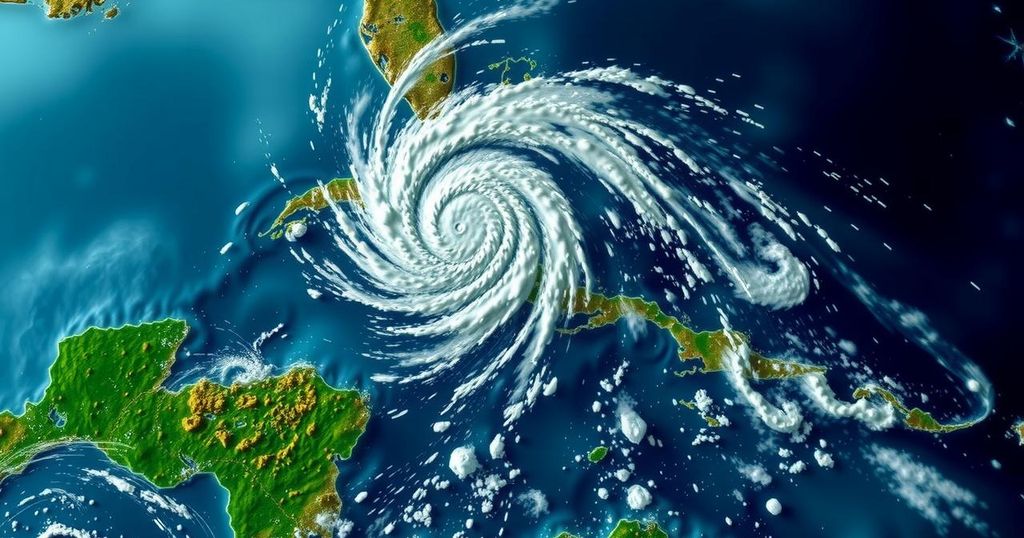National Hurricane Center Warns of Potential Tropical Storm Development in the Gulf

The National Hurricane Center is monitoring three weather disturbances that could evolve into tropical or subtropical storms, particularly focusing on one expected to develop in the Gulf of Mexico within the week, posing risks of localized heavy rains. Additionally, low-pressure troughs are affecting the Caribbean regions, with potential rainfall impacts being monitored.
The National Hurricane Center (NHC) is closely monitoring three weather disturbances that possess the potential to evolve into tropical or subtropical storms. One of these disturbances is anticipated to further develop into a significant weather system in the Gulf of Mexico within the forthcoming week. Reportedly, a expansive region of low pressure is predicted to emerge over the southwestern Caribbean Sea shortly. This system may gradually advance towards becoming a tropical depression as soon as late this weekend or early next week, as it drifts predominantly in a northward or northwestward direction across the central or western Caribbean Sea. The NHC has cautioned that, “Regardless of development, locally heavy rains are possible over portions of the adjacent land areas of the western Caribbean,” highlighting potential impacts on land areas before any formal storm formation occurs. The NHC has assigned a 60% probability for the development of a tropical cyclone within the next seven days. Furthermore, global forecasting data has shown increased coherence regarding the probability of this disturbance transitioning into the Gulf of Mexico, where it could intensify into a potential tropical storm or more severe system. While uncertainty remains, the residents along the Gulf Coast are reminded that the hurricane season persists until the end of the month. In addition, the NHC is observing conditions in the northeastern Caribbean Sea and the Greater Antilles. Current satellite imagery and surface observations reveal that a low-pressure trough positioned near Puerto Rico is generating extensive cloud cover and precipitation over the Dominican Republic, Puerto Rico, the Virgin Islands, northern Leeward Islands, and the Atlantic waters nearby. This system could display slow development over the next two to three days as it shifts west-northwestward near the Greater Antilles, although it is expected to integrate into the broader low-pressure area centered in the Caribbean thereafter. Locally heavy rainfall is also a plausible outcome for those regions over the ensuing days. Lastly, a third area of interest has emerged in the far northern Atlantic, where a formidable non-tropical low-pressure area is located approximately 450 miles west of the Azores. This system has demonstrated limited shower activity, yet there exists a possibility of some subtropical development as the low continues to venture generally eastward over the following days. Currently, the NHC assesses only a 20% chance for the formation of a subtropical storm in this region over the course of the next week.
The National Hurricane Center plays a vital role in monitoring and forecasting tropical cyclones, particularly throughout hurricane season, which officially runs from June 1 through November 30. The likelihood of tropical disturbances developing into storms can significantly impact coastal communities, leading to hazardous weather conditions, heavy rainfall, and potential flooding. Understanding the formation of these systems requires a combination of meteorological data, satellite imagery, and atmospheric conditions.
The NHC is currently vigilantly tracking three significant weather disturbances that could develop into tropical or subtropical cyclones. A major focus is on a low-pressure area expected to develop in the Caribbean, which is likely to head towards the Gulf of Mexico. Heavy rainfall is anticipated across various Caribbean regions, highlighting the potential impacts of these systems. The circumstances surrounding these disturbances underscore the importance of preparedness in the Gulf Coast as hurricane season continues.
Original Source: weatherboy.com







